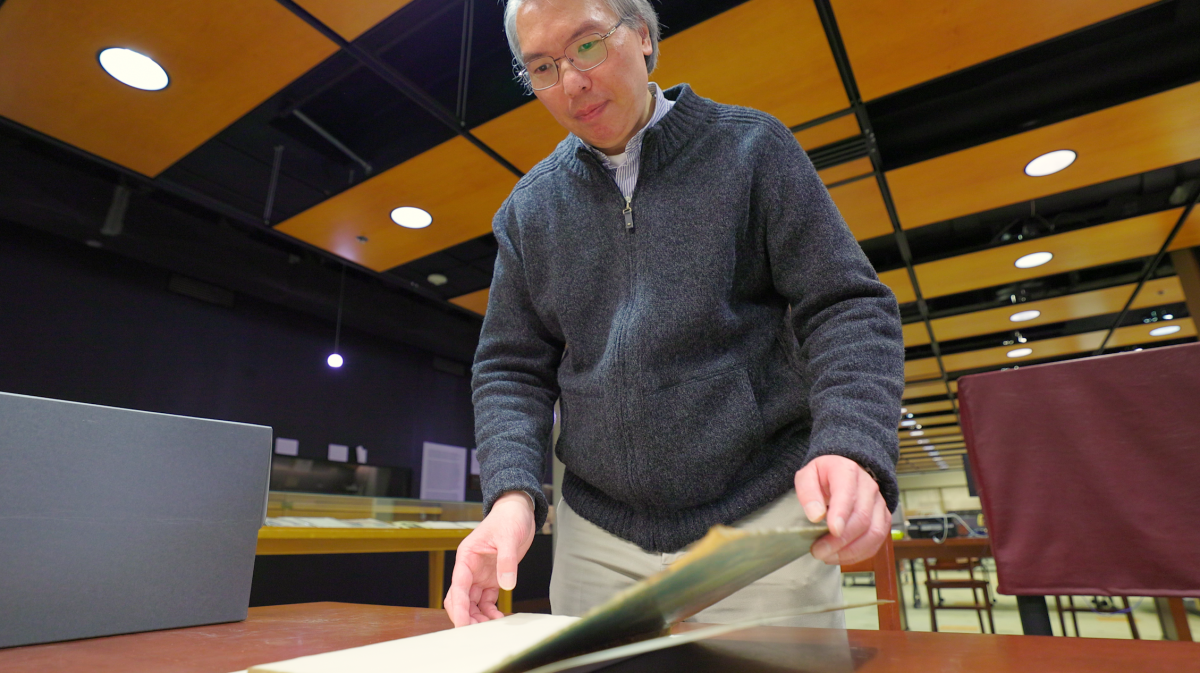
Cryptic notes, secret pockets and a UM code cracker
It’s a story that could easily be a plot line any great spy movie but I doubt James Bond or Ethan Hunt would be able to crack this secret code.
It has twists and turns that will leave you questioning “how did he figure that out?, and will leave you with possibly even more questions than answers at the end. One thing is certain, none of this could have happened without the brilliant mind of one UM expert.
So grab some popcorn and buckle up, the story begins now!
Picture it, Maine 2013!
Archeological curator Sara Rivers Cofield was out antiquing with her mom. Sara is an avid collector of Victorian-era clothing and she had admired a bronze-coloured dress a couple times but the $100 price tag was a bit too steep for her. But on this day her mom convinced her to buy the silk bustle dress and this is where our adventure really takes off.
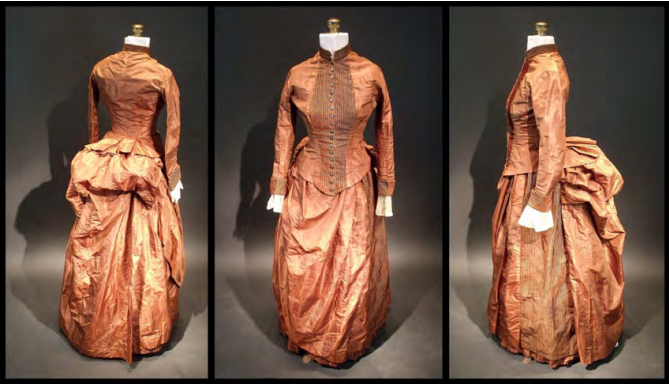
The Victorian-era silk dress containing coded messages in a hidden pocket. (Image courtesy of Sara Rivers Cofield.)
When Sara got the dress home she examined it and to her surprise, found a hidden pocket. Tucked away from prying eyes was two pieces of paper with a series of sentences made up of random words. Sara had a feeling they weren’t so random but perhaps a mysterious handwritten message or a secret code. She posted the papers on her blog and for the next 9 years those two pieces of paper became one of the world’s toughest codes to crack and was dubbed the “Silk Dress cryptogram” it was on the same list of uncrackable codes as the Zodiac Killer cipher.
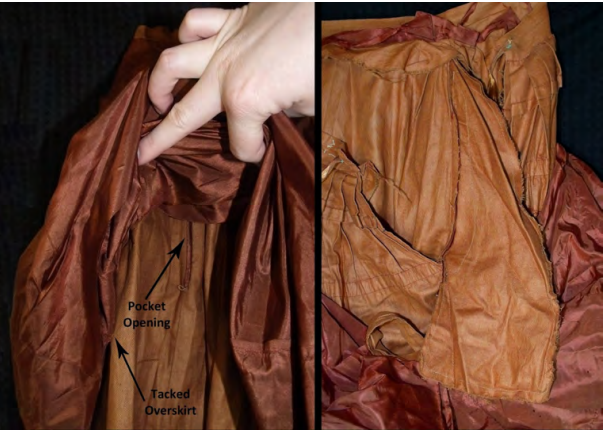
Hidden pocket of dress. (Image courtesy of Sara Rivers Cofield.)
Enter Wayne Chan
By day, Wayne Chan is an analyst with the Centre for Earth Observation Science at UM, but by night, he dabbles as a historian, storyteller and has a panache for code-cracking. When he found the “Silk Dress cryptogram” online, he knew immediately those words meant something. But what was the code saying, who was it meant for and why was it hidden away in that dress? These questions would take him on an unexpected journey that was hiding in his own backyard.
Right out of the gate, Wayne knew it was a telegraph code. But there are hundreds, if not thousands of different types of codes used to send to telegraphs, so narrowing it down was going to be a challenge. He began scouring through all the telegraph books online and held in the University of Manitoba archives to systematically rule them out. He then had to fan out his search to other universities and federal archives. His big breakthrough happened during the holiday season of 2022.
Wayne discovered the messages were encoded using a 19th-century telegraphic weather code used by the United States Army Signal Corps, which served as the national weather service for the U.S. during the late 1800s. That now narrowed down the age of the dress to roughly 125 years old.

Code sheet 1. (Image courtesy of Sara Rivers Cofield.)
These are the pieces of paper (Code sheet 1 & 2) found in the dress and what you are looking for here is the order of the words, Wayne says this is what is the most important item to read in this transmission. The first codeword had to be the station name, followed by the codeword representing the pressure and temperature, etc. Wayne says “The codewords for each weather element were not mutually exclusive. The same codeword might be used for more than one weather element, hence the position of the word on the line was notable in determining its meaning.”

Code sheet 2. (Image courtesy of Sara Rivers Cofield.)
Getting to this point required the help of the National Oceanic and Atmospheric Association (NOAA). Experts there were instrumental in finding the American weather records from the late 1800’s. Now, Wayne was getting closer to cracking the code, but there was one more surprise waiting to be found.
Using records from NOAA, Wayne was now able to pinpoint the exact cities in the U.S. mentioned in the code and even the date, Sunday May 27th, 1888. And to his surprise, several of those codes were from Canada, including Winnipeg.
Go back to the codes and look at the last six messages of Code Sheet 2. That is where it says “GARRY” and that is referring to Fort Garry, a Hudson’s Bay Company fur trading post located near the confluence of the Red and Assiniboine Rivers. The observations were not actually taken at the fort but rather it was the name chosen for the meteorological station. We know this because the fort was demolished in 1882.
In fact, the weather station the code is referring to is UM’s St. John’s College weather station. In 1888, St. John’s College was home to the official weather station for Winnipeg. It was located in the heart of what we now know as downtown Winnipeg on Main Street and Church Avenue (a Manitoba Public Insurance building is now there).
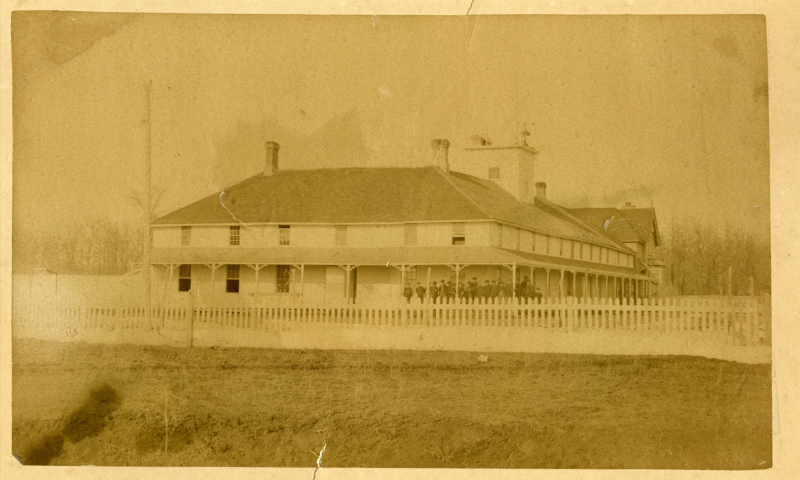
St. John’s College weather station 1876 – Photo from UM Archives
Mystery solved, right?!
Well, yes and no. The code was definitely cracked which was a huge triumph for Wayne and marveled by fellow code crackers around the world but there were/are a couple loose ends to tidy up.
As for who owned the dress, Sara noted a nametag stitched into the bodice of the dress that read “Bennett”. Wayne discovered in the 1888 Signal Service annual report it lists a number of women who were voluntary weather observers, including a “Miss Mary C. Bennett” who was a voluntary weather observer in Fairview, Fulton County, Illinois.
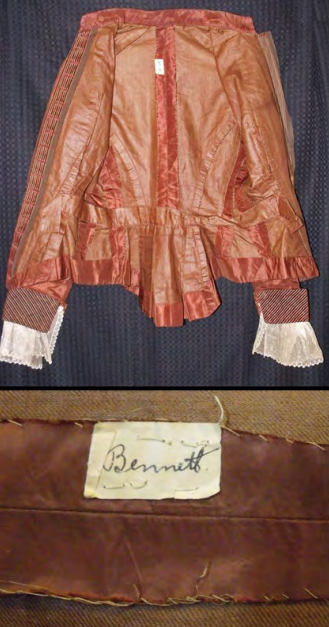
Name tag sewn on bodice of dress. (Image courtesy of Sara Rivers Cofield.)
Wayne and Sara have not been able to 100 per cent connect the woman and the dress together.
Some people have speculated because the weather was coded on a Sunday, perhaps it was an important date— and this is where it gets more like a Mission Impossible movie—was she up to something nefarious. One detail Sara noted about the pocket in the dress is that it was in a very discreet location and very private, making her and Wayne wonder why were these two pieces of paper tucked away essentially in a secret compartment and why did it include Canada? What were you up to, Ms. Bennett?
Any code crackers out there?
This is where you come in—all you internet sleuths—can you crack these final two mysteries?
We skipped over a lot of amazing, intricate details in this article and it would be a shame if you didn’t read all the lengths Wayne went to, to crack this code that baffled some of the top cipher busters around the world. You can read his full report on how he cracked the “Silk Dress cryptogram”.
You can also see this frock up close and hear more from these two dress detectives in this video .






